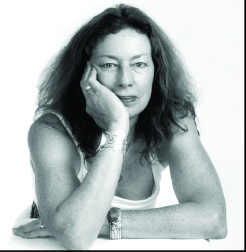In this isolating time of contagion and global pandemic, those of us not on the frontlines of the Covid-19 battle have been asked to do our part by staying home. April and May calendars are blank. Connections among friends near and far increasingly happen via Zoom in the safety of our homes. Masks are worn on trips to grocery stores, pharmacies and the Post Office. Because we no longer venture far afield to explore, the parameters of our adventures have become the rooms in which we are self-quarantined. Rather than be bored, this is exactly when we should test novelist George Orwell’s observation: “To see what is in front of one’s nose takes a constant struggle.” And so dear reader, I invite you to take a virtual walk with me around my writing studio. I’m certain you’ll find it a marvelous place to travel the world. Let me begin by describing the lay of the land and how my studio came to be. In its prior life, this 36×24-foot room was a garage and workshop. It occupies the lower half of a two-story building with oyster-colored siding and is situated across a glade from the house where Kit and I have lived since 2005. As a workshop, it had a concrete floor and drain, elevated utility plugs, unfinished walls, a single door for entry and a 16-foot, doublewide garage door to accommodate a sit-down lawn mower and a 1950 Street Rod truck the owner planned to remodel. But I imagined it as something else entirely. Re-designed, it became a studio, art gallery and library with wide plank pine flooring, antique furniture, bookcases and art lights. A space in which to create. To write. To exercise at a ballet barre. To entertain friends and talk about books while sharing a glass of wine. A French provincial vanity with a porcelain wash basin is stocked with crystal wine glasses. Knife marks etched into the surface of a nearby 18th century table date back to the French Revolution. In the back of the room, a wide worktable that Kit and our nephew Adam created from a rustic door is covered with photographs, cards, pots of ink, glue, scissors, a light table, and plans for future art projects waiting to happen. Nearby, an easel and zinc stand with brushes, palette knives, tubes of oils and watercolors beg to be carried outside for a day of plein-air painting. Before moving in, our son Hayden created an architectural model of the room that helped me imagine how to design and furnish it as four sections within a single open space. The bar and old French table sit on a large Kilim rug that fills one of the quadrants. In the next area, my Grandmother Florence’s two upholstered loveseats sit at a 90-degree angle on a pastel French silk rug that belonged to Kit’s sister Kate. Behind one of the settees, a low table with an unattached top holds a reading lamp, curios and framed photographs. In the nineteenth century, French bakers used the rustic lid to kneed bread dough, then placed the loaves under the lid to rise. In the back quarter of the studio, a solid oak Dutch library table serves as my desk. This is where I write, facing the wall as essayist Annie Dillard did, so as not to be distracted by the world outside or the art, books, rugs, lamps, and curios that fill the room. Did I say books? Oh my, do I have a world of books in this room! While the room was without a single bookshelf when I first saw it, our carpenter friend Dale soon came to the rescue. What I imagined and Dale created was a 20-foot long, double-sided bookshelf positioned in the middle of the room, setting apart my workspaces in the back and my living spaces in the front. Built to my specifications, some shelves are designed for tall atlases and art books while others are suitable for hardback books, picture frames and objets d’art that each tell a story. When the original, three-shelf high bookcase was full, a second two level shelf was added to the top, and over the years additional bookshelves have been added along the walls at the west end of the room. The teal-colored French doors that replaced the industrial garage door allow southern light to pour into a small arboretum-like space where a potted olive tree, rosemary and hibiscus plants happily winter over. These quiet afternoons, I spend an hour at my ballet barre, following dancer Isabella Boylston as she leads her followers in barre exercises via Instagram. With one hand on the barre, I square my shoulders, face forward as my image reflects in a studio mirror. As ballet music fills the studio and she begins each session, I’m transported back in time to an upstairs dance studio in Los Angeles where my friend Pat Fennell and I took ballet lessons 40 years ago. Our instructor Irene stands just ahead, leading us as we bend, plié, and rise on our toes with our arms over our heads. Alone in my studio, time is suspended, and anything is possible. Cathy Salter is a geographer and columnist who lives with her husband, Kit, in Southern Boone County at a place they call Boomerang Creek.

By: Cathy Salter








Facebook Comments